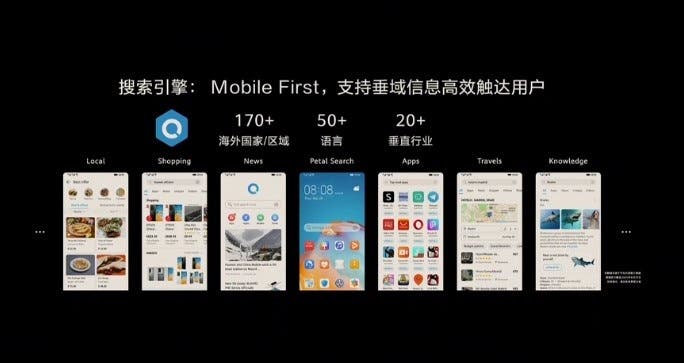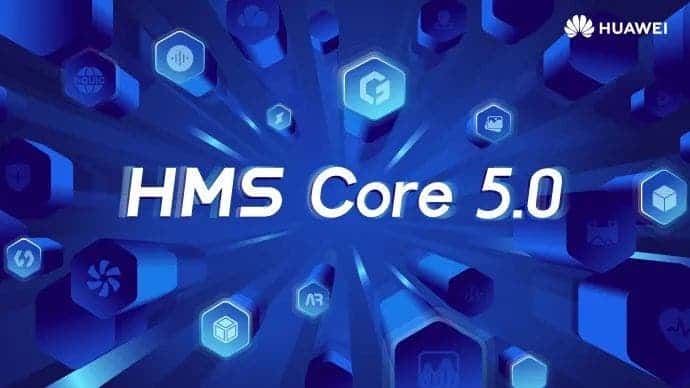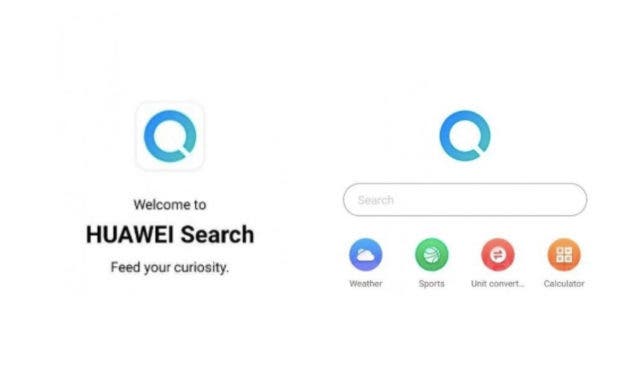Today, the Chinese tech giant held the Huawei Developer Conference 2020. At the meeting, Zhang Pingan, President of Huawei Consumer Business Cloud Services announced the official release of Huawei’s search engine. It is mainly for the mobile field. He said that the search engine is mainly for Huawei mobile terminal users. It currently covers more than 170 countries and regions, more than 50 languages , and more than 20 vertical industries.

Petal Search
Prior to this, Huawei has taken the lead in launching the online search service Petal Search in overseas markets to replace Google search.
In June of this year, Petal Search was launched on the App Gallery. Petal Search is developed by Huawei. But the search content mainly comes from third-party partners, including Qwant, the largest search engine in Europe, and Yandex, the largest search engine in Russia.

Huawei will fully open up the five main service engines of HMS, planting innovative fertile ground for global developers and building a new HMS ecosystem. The five main service engines are: payment engine, advertising engine, browsing engine, map engine, and search engine.
Currently, Huawei smartphones’ ‘Smart Search’ can work in six categories:
- ‘Local’ can search for local contacts, text messages, memos, etc.;
- ‘Integrated’ searches all categories, including news, videos, music, applications, etc.;
- ‘Web’ searches are consistent with Baidu web pages; ‘
- ‘Apps’ specifically searches for mobile app apps;
- ‘Video’ and ‘Music’ search for their own ‘Huawei Video’ and ‘Huawei Music’, respectively.
HMS Core 5.0
HMS Core 5.0 not only opens up cloud capabilities, but also opens up software, hardware, and chip accumulation capabilities.

Zhang Pingan said that HMS has reached 56 Kits, 12,981 APIs, 1.8 million registered developers this year, and 96,000 integrated HMS Core applications.
Huawei vs Google
He also pointed out that Huawei’s application market is already the world’s top 3 application market, with 700 million users worldwide. The overseas sales of HMS smartphones began to increase after May this year.

From January to August 2020, the cumulative distribution of applications reached 261 billion times.
Generally, in overseas markets, Huawei has lost access to Google GMS mobile services and has had to develop its own HMS. Now, it has become the world’s third largest mobile ecosystem after iOS and GMS.
HMS Core 5.0 fully covers and opens up seven major areas, namely application services, graphics, AI, media, systems, security, and smart devices. Among them, more than 20 new functions have been added to the graphics and media fields, and all capabilities are free.

Compared with a year ago, the number of global registered developers of Huawei HMS increased by 98% from 910,000 to 1.8 million. And the number of integrated HMS Core applications increased by 123% from 43,000 to 96,000. The number of overseas premium applications on the shelves increased from 6,000 increased by 10 times to 73,000.
Follow Gizchina.com on Google News for news and updates in the technology sector.





